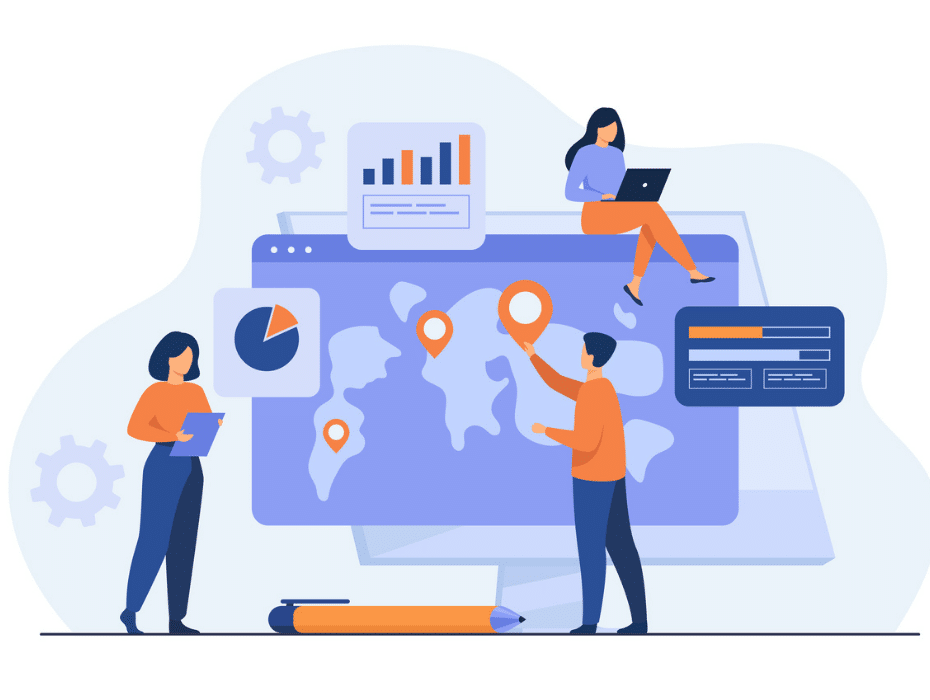Highlights:
- Intelligence Amplification is the use of technology to support and amplify human intelligence.
- Virtual assistants, chatbots, and communications platforms all already use IA in some form.
- Developments in the fields of AI, the IoT, big data, and more all mean IA is sure to develop apace in the coming years.
In a time of constant technological advances and innovations, computers and our communication systems can do more than ever before.
With algorithms that learn human patterns and provide personalized suggestions, chatbots that help on many e-commerce websites, and virtual assistants like Alexa and Siri that provide information when verbally asked, intelligence amplification is becoming a part of our everyday lives.
⭐ What is a composable enterprise? ⭐
APIs and low-code/no-code solutions are the future of cloud technologies. But what does that mean? Here’s everything you need to know.
This trend of electronic discovery—using intelligence systems to aid human decisions in all areas, from reaching a medical diagnosis to looking more into machine learning and the possibility of creating a complete artificial intelligence—is only going to continue.
While it sounds like you need an introduction to cybernetics to understand what all this means for businesses, we’re here to make it simple by explaining the definition and applications of intelligence amplification.
What does IA mean?
In contrast to artificial intelligence, which aims to replicate the functions and consciousness of the mind, Intelligence Amplification is used to extend the abilities of the already existing mind.
Augmented intelligence tools aid this amplification, with early forms including abacus, calculators, and even the internet all beginning with human consciousness and helping the mind with information processing to amplify intelligence.

Augmented reality is an application of Intelligence Amplification today—providing users with additional information or images to aid their thought processes.
Likewise, wireless computational earpieces and wearable smartwatches can track and provide information to users, assisting decisions and conversations. These augmented intelligence tools have the potential to transform our work environments and strategies by amplifying human intelligence.
How it works
With that definition in mind, the main role of many augmented intelligence tools is to accumulate big data from across the channels they have access to—creating a knowledge base of sorts—and feeding this back to aid human intellect.
This can create a symbiosis between the human brain and the Intelligence Amplification system, as they work together to tackle problem-solving and decision-making, taking effective use of information technology to the next level.

For example, common virtual assistants access the IoT and online knowledge bases to answer a user’s verbal queries.
This isn’t strictly artificial intelligence, as virtual assistants cannot make decisions based on this information, although machine learning helps it select more appropriate information based on previous interactions. Instead, the virtual assistant creates cognitive augmentation, influencing problem-solving by amplifying the intelligence available to use.
Real-life uses of IA
Intelligence Amplification is used throughout a range of industries including healthcare, retail, and engineering. With MIT and other organizations working on AI systems and brain-computer interfaces, the applications of Intelligence Amplification are increasing, making even more effective use of information technology.
With the following uses already regularly practiced, the symbiosis of the human brain and technology is becoming integral to our methods of work.
1. Communications
From providing suggestions for your email replies to highlighting when others are online in real-time, communications channels include Intelligence Amplification that most people interact with daily.
Communication platforms can be used to amplify intelligence through enabling search functions on past message threads, pooling documents and links shared in one space, and increasing access to teams or departments through team messaging and video conferencing.
Stay informed with RingCentral
These augmented intelligence systems in the field of communications have already adapted to become wearable and more easily transported, too.
However, innovation in this area continues, with researchers at MIT working on brain-computer interfaces, moving past natural language tools to act on intentional thoughts. This could have huge applications for communications in the future.
2. Customer service
Augmented intelligence tools can provide in-store customers with additional information from your knowledge base about products, using natural language tools to understand verbal questions.
These can also provide a 3D mapping of a store to direct customers to where products can be found. Something particularly useful to larger stores and making the customer experience more accessible and enjoyable to customers with additional service needs.
Similarly, online chatbots can serve a similar function in e-commerce, helping customers with their purchases in a whole host of ways. These can be programmed to resolve issues, direct customers to landing pages or FAQs, or provide additional information on the services a business has available.
This cognitive augmentation helps customers with the decision-making process, without requiring additional assistance from employees.
3. Consultations
With the use of virtual reality, clients can envision planned building works, design projects, and ergonomic changes in both workplaces and domestic spaces.
Wearable virtual reality headsets can measure the dimensions of an area and overlay it with 3D imagery, which can be rearranged within the virtual space. This provides clients with immersive visuals of the end result, giving them a better idea of what they’re buying into.
Alternatively, virtual assistants can provide real-time data and statistics from your services and products to aid your consultations with clients. By using big data received through the IoT, as well as linking to your knowledge bases, whatever questions are brought up, you can easily access the information and figures to answer them. This makes your consultations well-informed and more productive for both parties.
4. Identifying problems
Processing tools within your augmented intelligence systems can be used to identify issues within sections of coding, programming, or software building.
This makes it easier to pick up on bugs and ensure your service works well. This can also be used within SaaS situations, monitoring networks and detecting problems in real-time, informing IT support where their assistance is needed.
Automation can also be used to check structures and products for faults. By scanning for damage and comparing to previously indicated parameters, augmented intelligence tools can identify faulty products or parts early on and separate them from the rest.
This prevents larger damage from happening and assures the quality of the products made, essential in areas such as engineering, aviation, and healthcare products.
5. Sharing information
Intelligence amplification can be used to track records of clients and patients, keeping their information securely stored in one place and shared with those who need it.
By tracking history and previous interactions, future patient relations or customer service can be more personalized and useful, building up a knowledge base on the individual and preventing repetitive conversations or missing important information.
Likewise, augmented intelligence can build up knowledge bases in other areas, using analytics and algorithms to provide data. Inputting documents and other sources of information into these knowledge bases increases their utility and provides multiple channels to draw information.
This prevents the information from becoming siloed, instead of being accessible throughout businesses to be used for marketing, sales, customer service, development, and research purposes.
Integrate intelligence amplification into your business
Since the early computer pioneers, electronic discovery has aimed to amplify human intellect, helping improve our problem-solving and decision-making faculties. Since then, technological innovations have given the human brain access to vastly more information and, through machine learning, become more accurate and precise in the information provided.
Integrating Intelligence Amplification into your business practice makes use of the augmented intelligence tools already existing to improve customer experiences and quality of services, and ease the provision of these services.
With increasing research and developments in the area of cybernetics and artificial intelligence, we’re certainly going to be seeing more of it in our day-to-day business.
When it comes to your business, are you using the best possible team platform? Find out more about business phone service, virtual call center, conference call services, CCaaS and more, by getting in touch with RingCentral today.
Updated Mar 13, 2025












